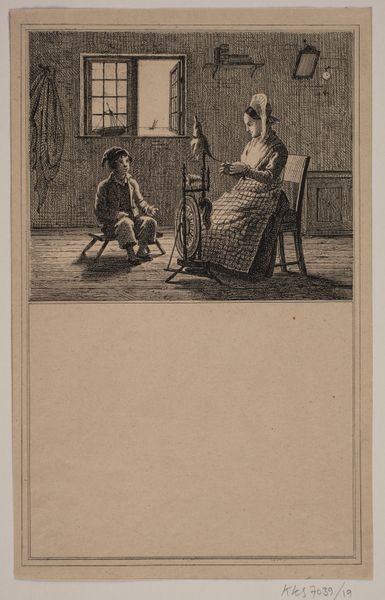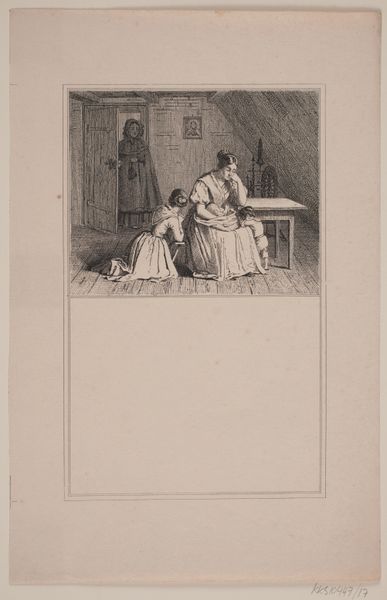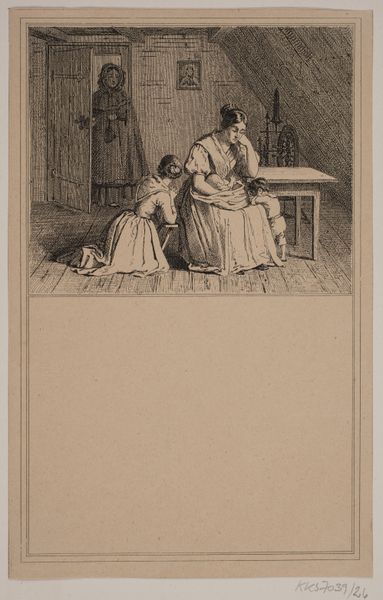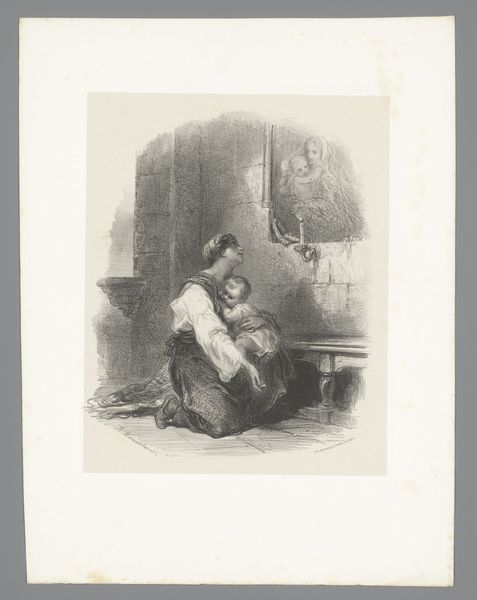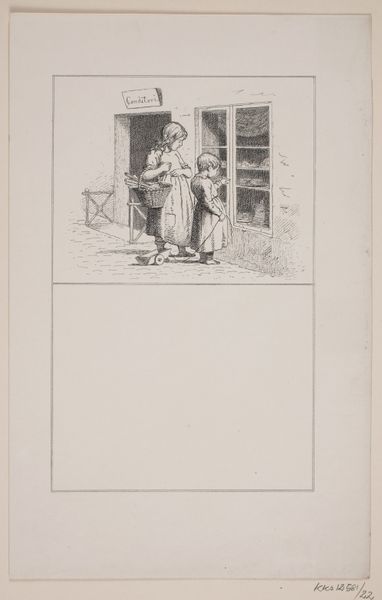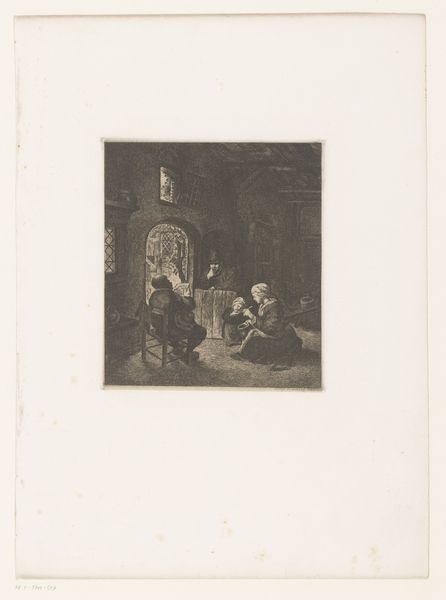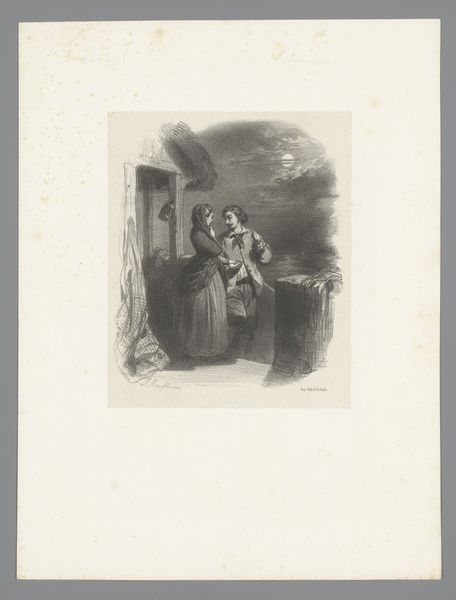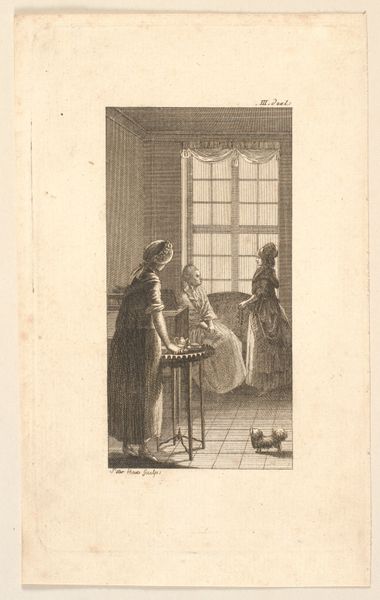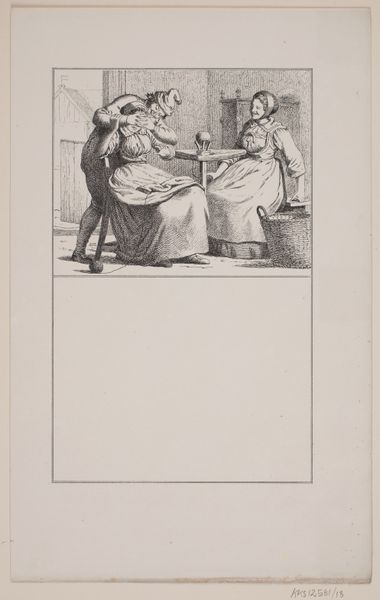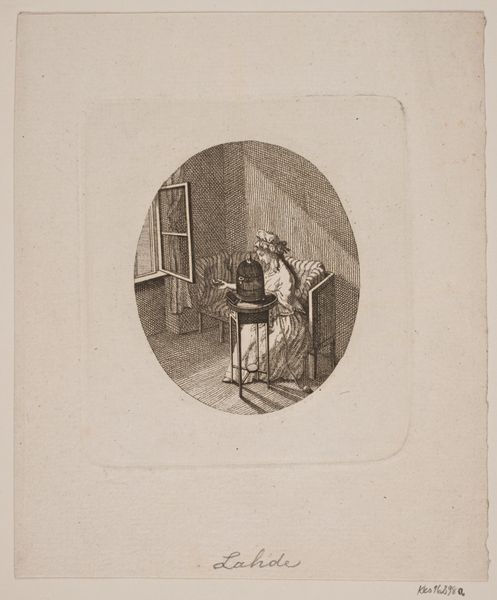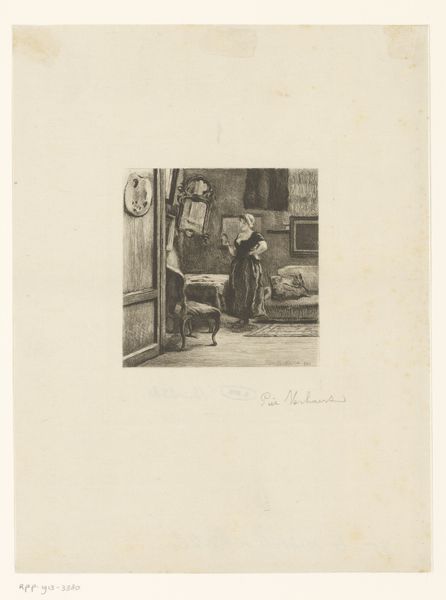
Moderen og sønnen. Prøvetryk til Chr. Winther og M. Rørbye, "25 Billeder for små børn" 1846
0:00
0:00
drawing, lithograph, print, paper
#
drawing
#
lithograph
# print
#
paper
#
romanticism
#
genre-painting
Dimensions: 270 mm (height) x 175 mm (width) (brutto)
Editor: Here we have Adolph Kittendorff's "Mother and Son," a lithograph printed on paper from 1846. It’s so intimate and domestic. The woman’s at her spinning wheel while her son looks on. What strikes you about this print? Curator: Consider the production of cloth itself. In 1846, while industrial textile mills were expanding, many families, particularly in rural areas, still relied on home spinning. This lithograph normalizes and romanticizes that labor, doesn't it? The “prøvetryk,” or trial proof designation, further emphasizes the process of creating reproducible images. It highlights the labor invested, the steps of transfer and printing. Editor: I see your point. It's not just an image of domesticity, but a record of a very specific, and perhaps disappearing, means of production. The print itself is a product of labor too! Curator: Precisely! And lithography, with its accessibility, brought art to a wider audience, fostering a sense of shared culture. Think about how this contrasts with commissioned paintings reserved for the wealthy. This print reflects social shifts around the creation and distribution of images. What impact do you think this ease of access would have had at the time? Editor: I hadn't considered the distribution aspect before. It's like Kittendorff is democratizing the image of labour! So it’s both depicting a certain kind of labor and itself the product of another kind of labor? Curator: Exactly. A print like this allows us to consider the materiality of art, its relationship to social context, and the blurring boundaries between "high" art and everyday life. Editor: That’s really made me see it differently, not just as a sweet genre scene but a material record of a changing society. Curator: And by examining these layers of production, we can uncover stories about labor, consumption, and the social value attributed to both.
Comments
No comments
Be the first to comment and join the conversation on the ultimate creative platform.
